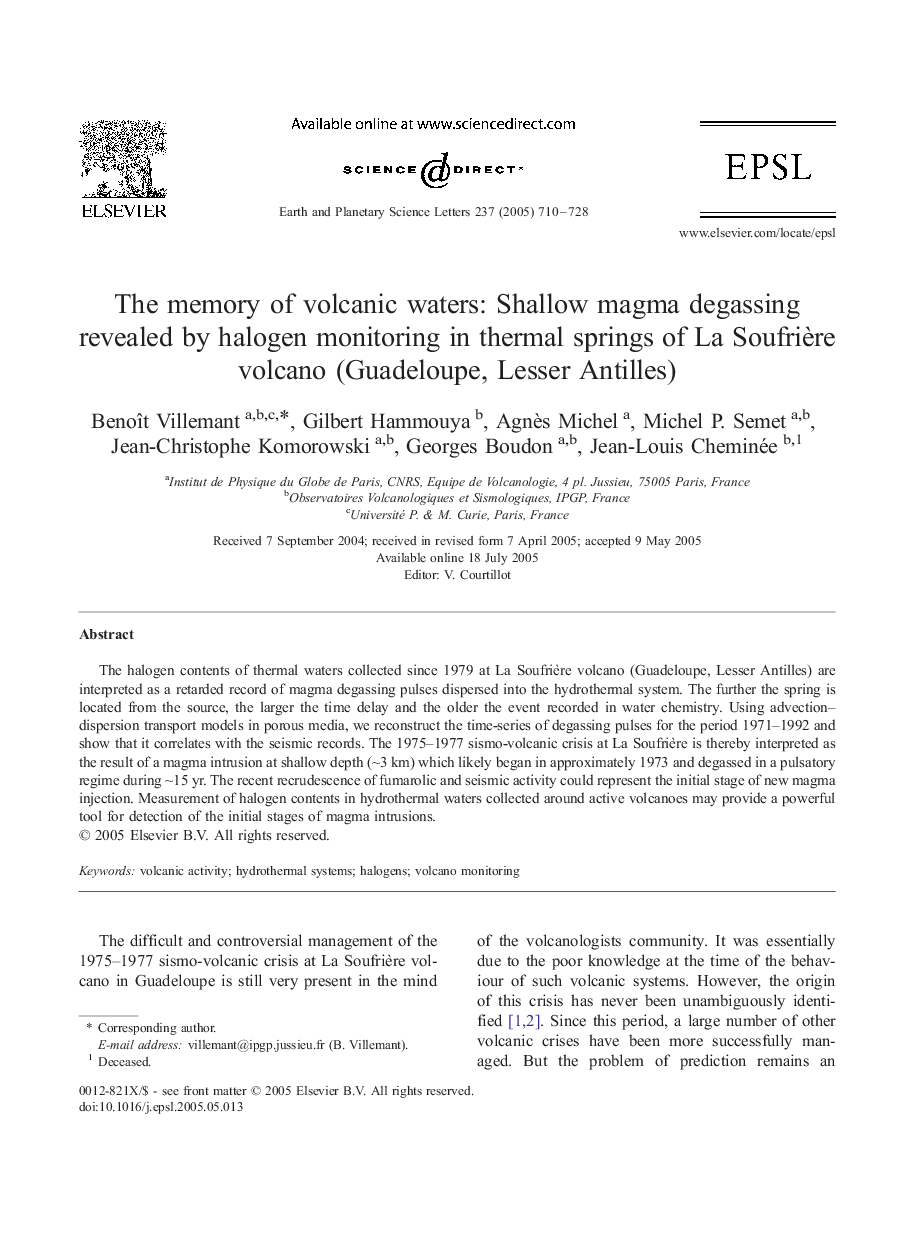| Article ID | Journal | Published Year | Pages | File Type |
|---|---|---|---|---|
| 9522065 | Earth and Planetary Science Letters | 2005 | 19 Pages |
Abstract
The halogen contents of thermal waters collected since 1979 at La Soufrière volcano (Guadeloupe, Lesser Antilles) are interpreted as a retarded record of magma degassing pulses dispersed into the hydrothermal system. The further the spring is located from the source, the larger the time delay and the older the event recorded in water chemistry. Using advection-dispersion transport models in porous media, we reconstruct the time-series of degassing pulses for the period 1971-1992 and show that it correlates with the seismic records. The 1975-1977 sismo-volcanic crisis at La Soufrière is thereby interpreted as the result of a magma intrusion at shallow depth (â¼3 km) which likely began in approximately 1973 and degassed in a pulsatory regime during â¼15 yr. The recent recrudescence of fumarolic and seismic activity could represent the initial stage of new magma injection. Measurement of halogen contents in hydrothermal waters collected around active volcanoes may provide a powerful tool for detection of the initial stages of magma intrusions.
Related Topics
Physical Sciences and Engineering
Earth and Planetary Sciences
Earth and Planetary Sciences (General)
Authors
Benoît Villemant, Gilbert Hammouya, Agnès Michel, Michel P. Semet, Jean-Christophe Komorowski, Georges Boudon, Jean-Louis Cheminée,
